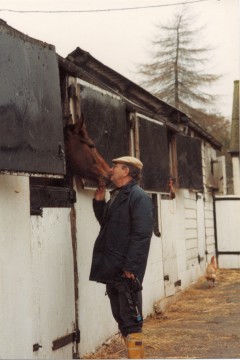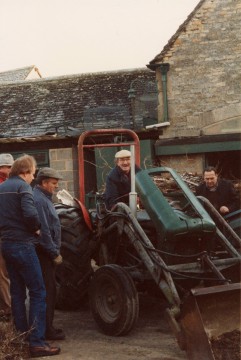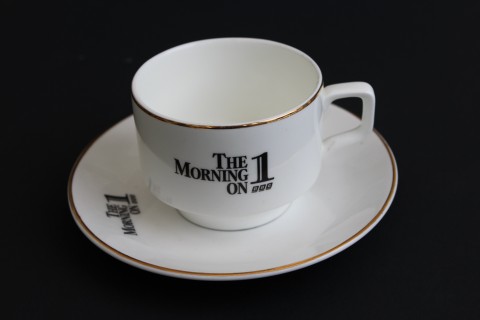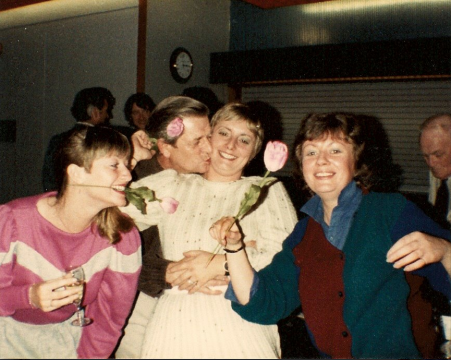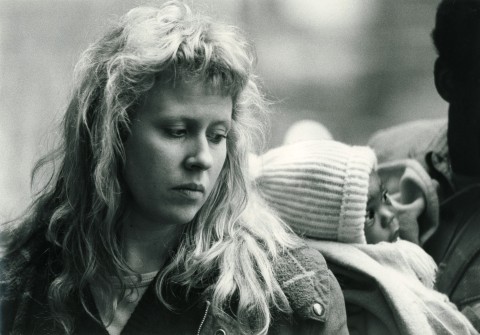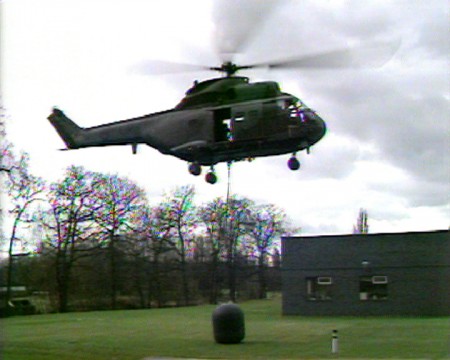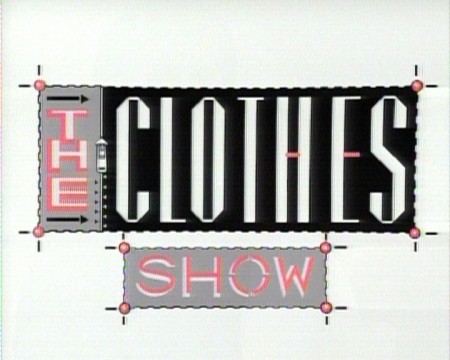I recently watched ‘The Colony’ by documentary film maker, Philip Donnellan, and wrote down my thoughts on seeing it for the first time:
‘The Colony’, a documentary produced and directed by Philip Donnellan for the BBC in Birmingham, is now almost 50 years old. It shows the lives of black immigrants to Birmingham, through the eyes of the West Indian contributors.
Looking at the documentary as a programme maker it illustrates some techniques we would consider quite modern, alongside a narrative structure which does not chime with contemporary sensibilities.
It is surprising how well the documentary stands up to a modern day viewing.
DOCUMENTARY STYLE
The film is refreshing in that it lacks the heavy sign posting which is ubiquitous in the documentaries of today. There is no opening two minutes where the whole premise of the film is explained, intercut with the most gripping clips of actuality. There is no voice over to tell the story, and no captions; so we only know the names of the contributors when we read the end credits. On the one hand this is frustrating, as we would be more engaged by the characters if we knew their names, whilst on the other the concept of anonymous outsiders is increased by the absence of a named identity.
The lack of signposting, and voice over means that the audience has to work harder to make the connections, and to understand what the documentary is trying to achieve. The construction is subtle, but carefully thought out, with the juxtaposition of the audio and visuals reflecting the conflict between the Imperial motherland and the West Indian immigrants. Throughout much of the film, the audio is out of vision, covered with overlaid visuals. Sometimes these show the contributor, for instance, going about their work, but more often are of seemingly disconnected images, for example shots of civic Birmingham, with audio about black children being unsuitable for adoption. This disconnect between sound and vision highlights the disconnect between the white civic culture and the black experience.
The audio is partly often out of vision because of the use of ‘voice montage’, which sets Donnellan’s work apart from other documentary film makers past and present. The radio producer, Charles Parker, is credited as the creator of the ‘voice montages’ in ‘The Colony’. The montages are effective in delivering a range of views from different voices. They add energy, but also a sense of confusion and disembodiment. We cannot assign voices to faces, and cannot build up an empathetic relationship with these contributors.
Whilst the film is certainly authored by Donnellan, it is not didactic. He seems to be trying to let the contributors speak for themselves, although it is naive not to assume that questions have been asked off camera to prompt the discussions and responses.
‘The Colony’ was shot on 16mm film, by a film crew consisting of a cameraman and sound recordist; a minimal crew by 1960’s standards. Reels of film would have had to be replaced every ten minutes. If you were making such a film today it would almost certainly be recorded by a self-shooting producer/director, on a high-end camcorder, with the ability to record continuously for at least 40 minutes. Given that Donnellan was filming with a crew and in short bursts, he managed to catch some natural moments, and the documentary does have a very observational air.
The camerawork is interesting in terms of style. Some sequences are handheld, and on a couple of occasions the camerawork becomes subjective, rather than objective. At one point a woman describes how disorientating the arrival by train to Birmingham was; when she finishes talking there is a frenetic montage of fast cut shots, of trains, guards, cars etc. The audio is a cacophony of train sounds, cars and horns. This approach of stylistically cutting the sound and pictures to give the impression of what the contributor experienced appears to us to be quite a modern technique – but this is obviously not the case! The other sequence, which uses a similar technique, is the introduction to the Church scene. The gospel singing and particularly the clapping are treated in a similarly frenetic fashion. But here the rationale, I think, is different. The montage is not to get the audience to empathise more with the experience of the contributor, but to highlight the difference between a sedate Church of England Service, and this far more participatory, higher energy occasion. The effect is to make the viewer feel an outsider.
The style of the film is mostly observational, with the contributors speaking off camera or to each other; however this convention is broken very near the end of the film where the signalman speaks directly to camera, in the manner a presenter would. I wonder if the contributor adopted this form of address instinctively, or whether he was directed to do so by Donnellan, in order to talk directly to the audience for the first time and to emphasise the main point of the film: that the West Indian immigrant has a choice, to go back home, to integrate, or to live some unsatisfactory existence that is short of full integration.
An observational film, such as this, is nowadays largely constructed in the edit, but Donnellan would have had to shoot much more tightly than we can do on modern videotape, which is a fraction of the cost of 16mm film. The expense of shooting on film may well have meant that Donnellan had to be far more restrictive about what he shot, and he may have consequently had to plan out his running order far more carefully in pre-production.
A technique that Donnellan uses relatively frequently is the intercutting and revisiting of different scenes, for instance the signalman’s contribution is broken up. This is a classic documentary technique which is still common today, inter-threading stories and allowing for progression and the build up to the conclusion of the narrative.
There is a marked use of G.V.s (general views) in ‘The Colony’; urban townscape shots are long and lingering. Frequently the shots are of gas storage towers, railway sidings, and street scenes. Their job is to provide space for the film to breathe, but also to highlight the contrast between the grab, grey, industrial cities the immigrants were coming to in Britain and the largely rural, colourful and certainly sunny life in the West Indies. The recurring images of industrialization and particularly the railways, hark back to the early point made in the Science Museum: that the industrial pioneers had open minds, and asking the question whether people in 1960’s Britain were as open minded when it came to accepting the new immigrant population.
Although Donnellan makes much use of wide G.V.s, he does not follow the usual documentary convention of today, of beginning a new scene with an establishing wide shot. Instead he often shoots very tight shots, and the audience only catch brief glimpses of the surroundings as the scene progresses. This is particularly the case during the long discussion in the coffee shop, where the audience only realize how many men are in the room, and the actual location, towards the end of the scene. The same is true of the scene with Aston Hall, where additionally we have a disconnect between outside and inside. The camerawork is an observational exterior high pan, whilst the audio is from a guided tour inside. The audience is initially excluded, perhaps echoing the content, of the black man being excluded from white history, where subjects like slavery and the wealth this brought to Britain, is rarely mentioned.
Donnellan achieved good access with what could have been potentially difficult to reach contributors. As a white, middle class male, this might have been quite challenging, and extremely time consuming. Access is still a critical factor in successful documentary making today, and being able to gain the trust of hard to reach communities is no easy feat.
Donnellan did not shy away from non-standard production techniques, both in his shooting and editing. Noticeable are some jump cuts, which are rather jarring and unattractive. These would be seen as unprofessional today, and an attempt would be made to overlay them somehow. He also uses soft edged wipes from time to time, which we might wrongly consider a fairly modern technique. The use of ‘voice montage’ he borrows from radio. Visual montage is an extremely common tool of the factual programme maker, but the concept of ‘voice montage’ is not. It is also noticeable that Donnellan sometimes uses stills, to freeze the action and show a disconnect between the contributor and audience.
NARRATIVE
The narrative is constructed in a fashion that is unlikely to be used today. We are being shown a ‘slice of life’, rather than a cohesive story. This is not to say that the film lacks a narrative arc, and there is certainly an ordered and logical progression of scenes. This style of narrative tends not to be favoured by commissioners today. There is no clear conclusion to the story, and the sheer number of contributors means that it is difficult for the audience to empathise.
The film is consciously constructed, despite the observational shooting style. Subjects are introduced and then picked up on later. This is sometimes done in a rather heavy-handed fashion, and is particularly apparent when introducing the scenes of nursing and teaching.
Some scenes are held far longer than would be acceptable to today’s tastes. This is particularly true of some of the discussion scenes, where although the content is interesting the visuals are not very stimulating.
The scenes are ordered for a progression of activity, from work scenes, home scenes, and community gatherings , through to socializing and worship. There is also a progression of themes including the concepts of open mindedness, broken promises, disappointment in arriving in Britain, wanting to go back, problems with discrimination and racism, working together, but not socializing together, and worshiping separately. The conclusion, stated by the signalman is that the black man has certain choices: going home, integrating, or living an unsatisfactory middle existence.
CONTRIBUTORS
The contributors have been carefully chosen, and all are articulate and dignified. Donnellan concentrated on including predominantly black contributors, including many seemingly ordinary working class men, whose voices were rarely heard on 1960’s British television. He was not interested in seeing how white contributors viewed the immigrant families, but in hearing the untold story, of what it felt like to be an immigrant coming to Britain. The contributors are predominantly but not exclusively male. The scenes with the nurse and the teacher felt like they had been included to give some gender balance.
SOCIAL CONTEXT
One of the striking aspects when watching ‘The Colony’ as a modern day viewer is the depiction of contemporary 1960’s society. Smoking was much more commonplace, and much of what we see has changed in the fifty years since the film was recorded. There are no bus conductors nowadays and very little heavy industry in Britain. Something else that surprised me was how smart, and how dignified all the contributors were, and how respectful of each other, and of the British Motherland, they were. The way the use of language has changed is also noticeable. We hear words like ‘half-caste’, and ‘coloured’ in the film, being used in everyday parlance by black contributors: words that would be seen as derogatory or racist today.
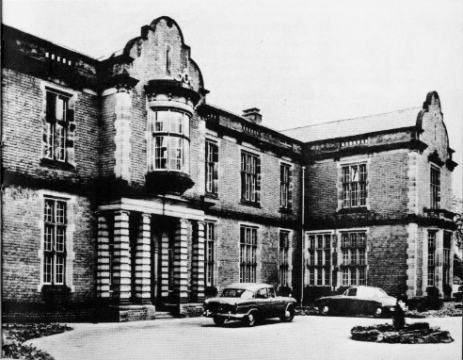
BBC offices in Carpenter Rd, Edgbaston, where I think Donnellan would have worked whilst producing 'The Colony'
The following comments were left on the Pebble Mill Facebook page:
Conal O’Donnell: ‘He was certainly at Pebble Mill in the mid-80s I had the privilege & pleasure of drinking with him -often in the company of Stan Jones-in the club bar.The standard of wit & repartee was high indeed!’
Pete Simpkin:’Fascinating Vanessa and a very detailed analysis..I would very much like to see a similar treatment given to some of todays efforts which unlike Donellan’s are all style and very little substance. Were he to make this feature today it would undoubtedly have been called ‘Donellan’s Colony’.’
Gordon Astley:’..when I joined the Beeb I was seconded to Charles Parker and worked on the Radio Ballads. One night, editing in Carpenter Road, I fell into bad company when Charles and Philip,plus assistant Gina, broke into the BBC records room and they went through their files. All I can remember was that the Beeb regarded them both as rather subversive!!!’
When asked if the escapade in the BBC Records room had ever been discovered Gordon Astley replied, ‘..no….I have waited until what, I presume, is the Statute of Limitations on the case. All I remember,m’lud, is that drink had been taken…they were my seniors..I fancied Gina to bits….and it was a merry jape. Mea Culpa etc. !!!’
